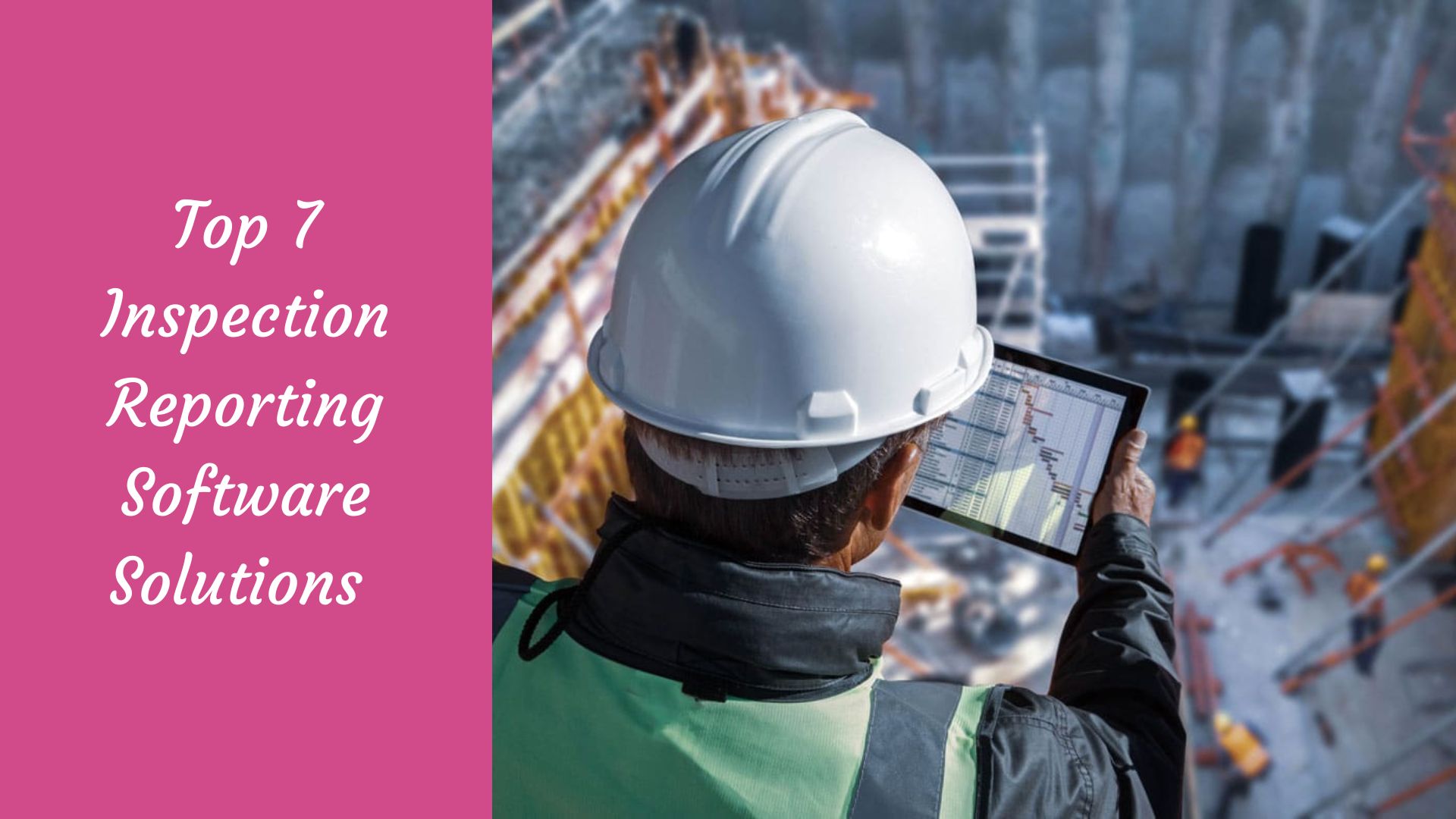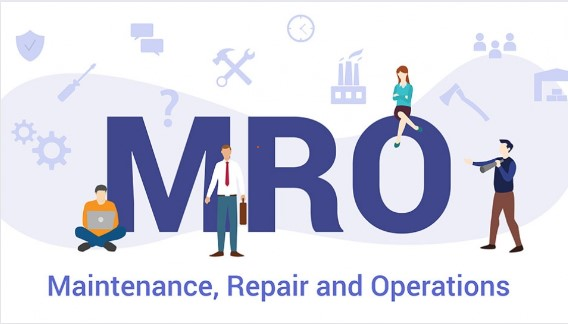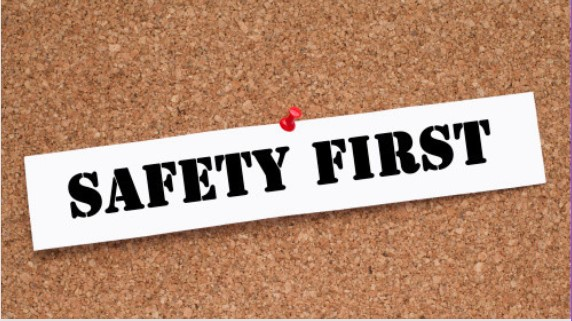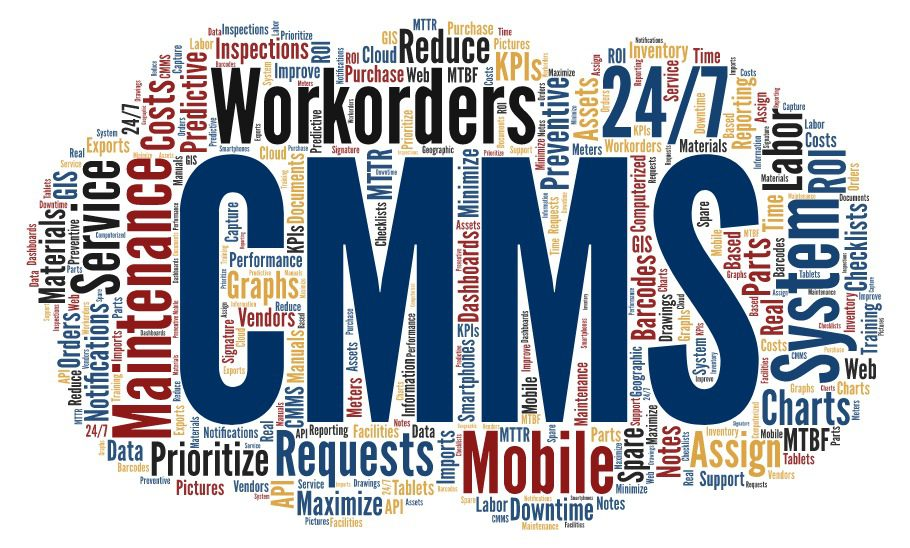.jpg)
What is MRO inventory? Introduction to Maintenance Repairs and Operations
Viki Dongre |
13 Jun 2024 |
12:52 PM
- What Is MRO?
- Maintenance, Repair, and Operations
- What Are the Types of MRO?
- Roles in MRO Management
- Streamlining Operations with CMMS
- Benefits of MRO
- Optimize Your MRO With Proptor
- Essentials of MRO Inventory Management
- Why is MRO Inventory Management Essential?
- Conclusion

Top 7 Inspection Reporting Software Solutions of 2023
Kirti Prakash 23 Jun 2024 | 11:37 AMRevolutionize your inspection processes with our top-tier Inspection Reporting Software. This intuitive tool is engineered to streamline and automate inspection workflows, offering customizable templates, real-time data collection, and seamless report...
Maintenance Repairs and Operations (MRO) form a critical aspect of efficient business processes, ensuring the seamless functioning of equipment and facilities. In essence, MRO encompasses the strategies and practices employed to uphold the operational integrity of machinery, infrastructure, and other essential assets within an organization.
What Is MRO?
MRO, an acronym for Maintenance, Repair, and Operations, encompasses a wide range of activities aimed at sustaining and optimizing the performance of assets within a business. This multifaceted discipline involves systematic planning, execution, and oversight of tasks related to equipment maintenance, infrastructure repairs, and operational functions. MRO strives to minimize downtime, enhance equipment lifespan, and ultimately contribute to the overall productivity and reliability of an organization.
In Inventory management, MRO items are the office supplies, MRO materials, and industrial equipment that are essential for the day-to-day operations of a business but do not directly contribute to the end product. These items are critical for maintaining and supporting the production process, ensuring facility functionality, and addressing unforeseen issues.
Maintenance, Repair, and Operations
Maintenance, Repair, and Operations collectively address the holistic lifecycle management of assets. Maintenance focuses on routine checks and preventive measures to ensure equipment reliability. Repair steps in when issues arise, aiming for swift and effective resolutions. Operations entail the day-to-day activities and processes that contribute to the core functions of an organization.

The synergy of these elements underlines the significance of MRO in maintaining operational continuity and fostering sustainable business practices. As we delve deeper into the intricacies of MRO, we'll explore its pivotal role in supply-chain management, the diverse types of MRO materials, and the professionals who orchestrate these essential functions.
What Are the Types of MRO?
Equipment Maintenance and Repair
Different types of MRO inventory management cater to the diverse needs of businesses. Understanding these categories is pivotal for effective management. Equipment Maintenance and Repair encompasses the routine care and corrective actions taken to ensure the continuous functionality of machinery. It involves scheduled inspections, lubrication, and necessary repairs to prevent unexpected breakdowns.
Production Equipment Maintenance and Repair
Production Equipment Maintenance and Repair goes a step further, focusing specifically on the machinery involved in the production process. This type of MRO strives to optimize production efficiency, minimize downtime, and extend the lifespan of critical manufacturing equipment.

Material Handling Equipment Maintenance and Repair
Material Handling Equipment Maintenance and Repair addresses the upkeep of tools and machinery responsible for moving, storing, and transporting materials within a facility. Timely maintenance in this category is crucial for logistics and warehouse operations.
Infrastructure Maintenance and Repairs
Infrastructure Repair and maintenance extend beyond machinery to include the overall physical structures and facilities. This involves the systematic maintenance of buildings, utilities, and other infrastructure elements, ensuring a safe and conducive working environment.
Tools and Consumables
Tools and Consumables play a pivotal role in MRO inventory management, focusing on the maintenance and replenishment of tools, supplies, and consumable materials essential for day-to-day operations. A well-maintained inventory of tools and consumables contributes to streamlined operations and prevents unnecessary disruptions.

Roles in MRO Management
MRO inventory management involves a collaborative effort from various professionals, each playing a distinct role in ensuring the efficiency and reliability of an organization's assets. The synergy of these roles is pivotal for seamless operations and cost-effective MRO inventory management strategies. MRO inventory professionals orchestrate a comprehensive approach to asset management, encompassing everything from preventive maintenance operations, MRO procurement process, inventory control to compliance.
Procurement Officers
Procurement Officers play a crucial role in sourcing materials and services needed for maintenance. They navigate supplier relationships, negotiate contracts, and secure the necessary resources for efficient MRO inventory operations.
Supplier Relationship Managers
Supplier Relationship Managers focus on cultivating and maintaining strong ties with suppliers. Building robust relationships ensures a steady supply chain, timely deliveries, and favorable terms, ultimately contributing to the smooth functioning of MRO processes.
Inventory Managers
Inventory Managers are tasked with the meticulous organization and oversight of MRO inventory. They track stock levels, ensure the availability of essential materials, prevent excess inventory and implement inventory control measures to optimize MRO activities. This role is fundamental minimizing downtime and optimizing operational efficiency leading to cost savings.
Standards/Compliance Officer
A Standards/Compliance Officer plays a critical part in ensuring that all MRO activities align with industry standards and regulations. They oversee compliance with safety protocols, environmental standards, and legal requirements, mitigating risks and ensuring a secure working environment.

These roles in MRO inventory management form a cohesive unit, with each professional contributing their expertise to the overall success of maintenance operations. Collaboration and effective communication among these roles are paramount, fostering an environment where MRO management functions seamlessly, assets are well-maintained, and operations remain resilient.
As we go deeper into MRO management processes, we'll explore how these roles collectively contribute to the streamlined functioning of maintenance and repair activities within an organization.
Streamlining Operations with CMMS
In the dynamic landscape of Maintenance Repairs and Operations (MRO inventory), the integration of Computerized Maintenance Management Systems (CMMS) emerges as a transformative strategy for enhancing efficiency, optimizing resources, and ensuring seamless operations.
Supply Chain Integration: One of the key advantages of implementing CMMS is its ability to streamline and integrate with the supply chain. The system enables supply chain synchronization, allowing for real-time tracking of MRO supplies, MRO procurement activities, and supplier relationships. By aligning maintenance needs with the supply chain, organizations can achieve a synchronized workflow, ensuring that essential materials are procured promptly, minimizing downtime and enhancing operational resilience.

CMMS plays a pivotal role in optimizing the production process by providing a centralized platform for planning and scheduling maintenance activities. This ensures that equipment downtime is strategically planned, preventing disruptions to the production line. The system also facilitates predictive maintenance, allowing organizations to address potential issues before they escalate, contributing to a more efficient and reliable production process.
Efficient inventory management is a cornerstone of successful MRO operations. CMMS offers a systematic approach to managing MRO supplies by providing real-time visibility into stock levels, raw materials, automating reorder processes, and preventing unnecessary stockouts or overstocks. This proactive inventory management not only enhances operational efficiency but also contributes to cost savings by minimizing excess inventory carrying costs.
Enhancing Collaboration: CMMS fosters collaboration among various MRO professionals involved in the maintenance ecosystem. Procurement officers, supplier relationship managers, and inventory managers can seamlessly collaborate through the platform, ensuring that everyone is on the same page regarding material requirements, procurement timelines, and inventory levels. This collaborative approach enhances communication, reduces errors, and contributes to the overall effectiveness of MRO management.
The integration of CMMS in MRO operations goes beyond mere digitalization. It establishes a connected ecosystem where supply chain, production processes, and inventory management converge to create a streamlined and resilient maintenance repair and operations framework. As organizations increasingly recognize the pivotal role of technology in MRO, embracing CMMS becomes a strategic imperative for those aiming to stay ahead in today's competitive landscape.
Benefits of MRO
Decrease Downtime

Decreasing downtime is achieved through preventive maintenance, focusing on production equipment repair. Effective MRO management ensures that essential maintenance and repair items are readily available when needed.
Improve Employee Safety
Employee safety improves with readily available safety gear, personal protective equipment, and proper MRO materials. MRO activities, like managing MRO inventory levels and using inventory management software, help reduce repair times.
Reduce Repair Times
Efficient MRO inventory management means having the right spare parts in stock, reducing the time required to locate and procure them during repairs. This helps in faster turnaround times for maintenance and repairs.
Optimize Your MRO With Proptor

Optimizing MRO with tools like Proptor enhances MRO inventory management, streamlining MRO processes. Proptor aids in efficient procurement, supporting supply chain management and vendor-managed inventory. Using Proptor in MRO strategy ensures cost savings and effective management of MRO professionals. The software focuses on supply chain materials, making it a valuable tool for maintaining equipment downtime and achieving corrective maintenance.
Integrating Proptor for MRO inventory maximizes the benefits of decreased downtime, improved employee safety, and reduced repair times through effective inventory control and streamlined processes.
Essentials of MRO Inventory Management
The key components of MRO inventory management includes:
-
Maintenance: This involves the routine activities required to keep machinery, safety equipment, and facilities in optimal working condition. MRO items in this category might include lubricants, raw materials, replacement parts, tools, MRO supplies and other consumables necessary for regular maintenance tasks.

-
Repair: When industrial equipment or facilities break down or malfunction, repairs are necessary to restore them to working order. MRO inventory includes spare parts, components, and tools needed for these unplanned repair activities.
-
Operations: MRO items that support the day-to-day operations of a business but are not directly involved in the production process. Examples include office supplies, safety equipment, janitorial supplies, and other preventive maintenance supplies.
Why is MRO Inventory Management Essential?
Efficient management of MRO inventory is crucial for several reasons:
Downtime Reduction: Properly managing MRO inventory ensures that necessary items are readily available when needed, minimizing downtime during maintenance or repair activities.
Cost Control: Effective MRO inventory management helps control costs by preventing overstocking or stockouts. It allows organizations to optimize stock levels and avoid tying up capital in unnecessary inventory.
Operational Efficiency: Implementing proper MRO inventory plan at the right time enhances overall operational efficiency. It ensures that maintenance and repair activities can be carried out promptly, minimizing disruptions to the production process.

Budget Planning: By understanding the maintenance repair and operations requirements, organizations can plan their budgets more accurately, allocating resources where they are most needed and avoiding unnecessary expenditures.
Supplier Relationships: Maintaining good relationships with maintenance repair and operations suppliers is essential to ensure a steady and reliable supply of critical items. This can involve negotiating favorable terms, ensuring timely deliveries, and optimizing procurement processes.
MRO inventory management is a critical aspect of overall supply chain management, ensuring that a business has the necessary resources to maintain operational continuity and respond effectively to maintenance and repair needs.
Conclusion
Maintenance, Repair, and Operations (MRO) are integral to the efficient functioning of businesses, focusing on the systematic maintenance, repair, and optimization of essential assets. MRO inventory management, encompassing a wide range of materials and processes, plays a pivotal role in achieving operational resilience.

Integrating Computerized Maintenance Management Systems (CMMS) is transformative for MRO operations, enhancing efficiency, optimizing resources, and ensuring supply chain integration. CMMS streamlines production processes, facilitates predictive maintenance, and promotes efficient inventory management, contributing to cost savings.
The benefits of MRO, including decreased downtime, improved employee safety, and reduced repair times, are maximized by utilizing tools like Proptor. In a nutshell, proper MRO management is essential for minimizing infrastructure repair and maintenance, controlling costs, optimizing operational efficiency, and ensuring the reliability of business operations.